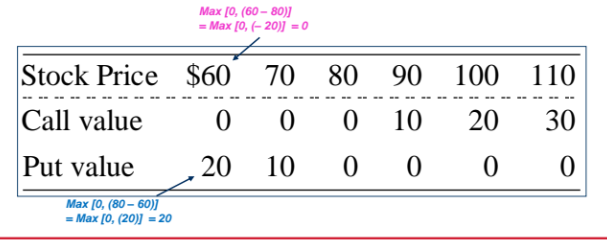Week 5 - Understanding Options
Overview of Options
Definition of Options: A financial contract granting the buyer the right, but not the obligation, to buy or sell an asset at a predetermined price before a specified future date.
Type of Financial Derivative: Their value depends on the value of another asset (underlying asset).
Common Derivative Instruments: Forwards, Futures, and Swaps.
Types of Options
Call Option: Right to buy an asset at a specified price (strike/exercise price).
Put Option: Right to sell an asset at a specified price.
American Options: Can be exercised any time before expiration.
European Options: Can only be exercised at expiration.
Exchange-Traded Options: Standardized and regulated by exchanges.
Over-The-Counter (OTC) Options: Tailored contracts between two parties in unregulated markets.
Option Terminology
Option Buyer (Holder): Purchases an option for a premium, has the right to exercise.
Option Seller (Writer): Sells the option, has the obligation to fulfill if exercised.

Option Premium: Price paid by the holder to the writer for the option.
Exercise Price (Strike Price): Predetermined price to buy/sell the underlying asset.
Expiration Date: Last date on which the option can be exercised.
Option Payoff Diagrams

Call Options
Payoff formula: ( ext{Payoff} = ext{Max}(0, S - X) )
In-the-money if asset price ( S ) is above strike price ( X ).
Put Options
Payoff formula: ( ext{Payoff} = ext{Max}(0, X - S) )
In-the-money if asset price ( S ) is below strike price ( X ).
Profit Profiles
Long Call: Profitable if asset price exceeds strike price.
Short Call: Profit decreases if asset price surges past strike price.
Long Put: Profitable if asset price falls below strike price.
Short Put: Profit decreases as asset price drops below strike price.
Option Valuation
Key Factors Influencing Option Premiums and Option Price.
Premium is the right to place an option does not exercise the option; to exercise the option you need to paya the exercise price. If don’t exercise the option, you made the most loss is the premium but try to reduce it through exercise it.
Current Stock Price (S): Higher prices increase call options, decrease put options.
Exercise Price (X): Lower prices increase call options, higher reduce put options' values.
Time to Expiration (T): More time generally increases both calls and puts.
Volatility (σ): Higher volatility raises option prices.
Risk-Free Interest Rate (r): Higher rates boost call values, decrease put values.
Expected Dividends: Negative effect on calls, positive effect on puts.
Put-Call Parity
Definition: A fundamental relationship between the price of European call and put options, helping to ensure no arbitrage opportunities exist.
Formula: [ ext{Value of Call} + ext{PV(Exercise Price)} = ext{Value of Put} + ext{Share Price} ]
Implication: Knowing one option’s price allows you to find the other’s price based on the relationship.
Strategies in Options Trading
American vs European Options
American Options: Have more flexibility and generally higher premiums.
European Options: Limited to exercise at expiration but may benefit from additional time value.
Hedging Strategies
Protective Put: Buying a share and a put option for downside protection.
Long Straddle: Buying both call and put options at the same strike price, profiting from high volatility.
Short Straddle: Selling both call and put options, profiting in a low volatility environment.